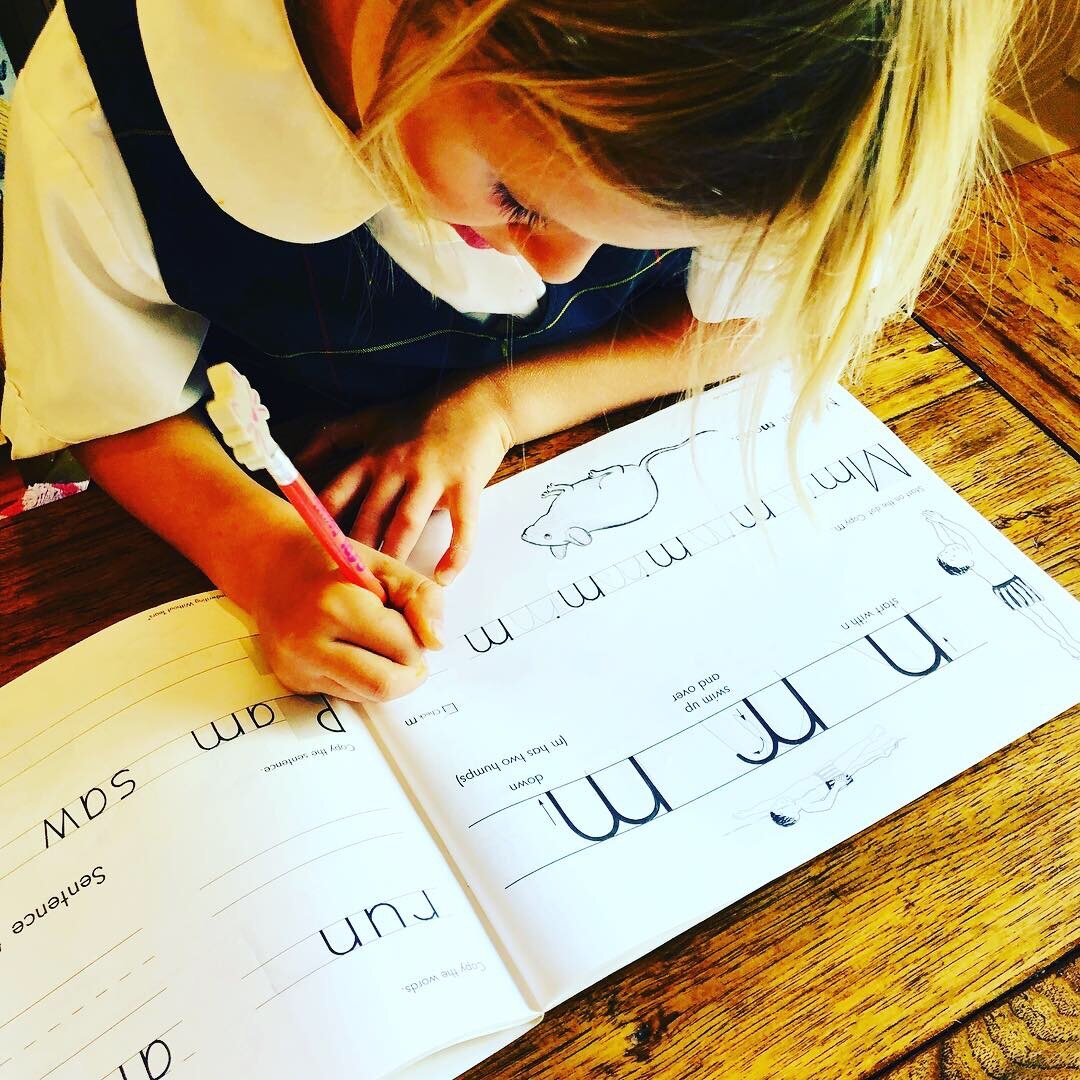My most recent post about self-regulation touched on some calming strategies to help children who are over-aroused, upset, anxious, sleepless, and frustrated. Let me tell you a bit more about sensory processing- what it is, why it’s important, and what you can do to help your child.
Sensory processing refers to the information that our nervous system takes in from our senses- touch, sight, smell, sound, taste, proprioception- the awareness in our body of our position in space provided by feedback from our muscles. The vestibular sense is our awareness of movement, balance, and coordination from information received by the receptors in our inner ears. And a lesser known sense is interoception, or our ability to understand the feelings inside our body like being too hot or cold, hungry, or tired.
We all respond differently to the sensory information coming at us. If you take a look around you right now, take a moment to be still. Listen. Pay attention to the lighting. Feel your muscles as you sit or stand-whatever your body position is. Smell. Shift your balance- what happens? What do you feel?
As children are developing, their nervous system responds in different ways to this various incoming stimuli. This is part of getting to know your child as an infant or, if you are a clinician, getting a detailed history from parents about infancy, childbirth, and developmental milestones to try and understand how the child experienced and interacted with their sensory-rich environment. As teachers, this is also critical. This helps you understand how to set up your classroom, scaffold a lesson, adjust volume and lighting, provide movement, and even provide accommodations for test taking or homework.
You may notice things about your child that they have strong reactions to or avoid. Here are some examples you may come across from infancy to school-age:
Crying when placed on their back for diaper changes
Crying when water is poured over the head or face during the bath
Calming when swaddled
Calming when sucking on a pacifier
Falling asleep on a walk
Calming when rocked
Turning away when presented with new faces or people right in their space
Crying when placed on sand or grass
Stuffing their mouth
Refusing different textures to eat
Difficulty falling asleep
Difficulty crawling or skipping crawling
Frequent night wakings around 3-5 + years
Bumping into peers frequently
Clingy at birthday parties or other stimulating environments/ situations
Breaking crayons when coloring
Slamming doors
Picking up or placing a cup down and spilling the liquid
Not noticing excessive food on the mouth or chin
Difficulty sitting with their bottom on the chair
Moving around constantly, without any ability to sit (phones, tablets, or TV excluded)
Difficulty interacting with peers during unstructured games (recess, lunch, or group work)
Difficulty focusing during unstructured activities
Does not demonstrate pain when very apparently got hurt
Lucy Jane Miller has provided research and insight to sensory processing and her work at the Star Institute provides us with this great checklist that dives a bit deeper into sensory processing. If your child exhibits quite a few of these responses, you may consider having an occupational therapy consult or evaluation.
A ball pit could be a child’s worst nightmare-others love it- and getting them out is the challenge!
So what can you do to address sensory processing?
By paying attention to your child’s reactions to various stimuli, their preference for different movement, tastes, sounds, and smells you have a little peek into their sensory system. You can also notice what they avoid. Does your child avoid the swings at the park or prefer to run around rather than climb on the play structure? Do they get excessively cranky when hungry, tired, hot or cold? Does every diaper change result in screaming? There are many strategies that you can employ to help address their sensory system.
A tire swing may be something your child craves or avoids- forcing a child onto a swing can be VERY disregulating and send them into a state of flight- other children cannot get enough- always checking in with your child with any swing is critical
Some kiddos love to really FEEL - even painting on their body for this sensation!
One strategy that helps to meet the sensory needs of the nervous system is called a sensory diet. The sensory diet concept is an approach that is based on sensory integration principles. A sensory diet is a planned and scheduled activity program designed to meet a child’s specific sensory needs. The goal of a sensory diet is to maintain optimal levels of arousal and performance in the nervous system.
For infants, this could mean gentle infant massage before and after bath time, using a soft sponge instead of a cup to pour water on them, adjusting the temperature of the water, TALK them through diaper changes, clothes changes, bath time. This language not only teaches them bodily autonomy and respect we have for each person but also helps them anticipate what is next. Having a routine also helps with this anticipation. Believe it or not, even the youngest infant responds to this language, familiar routines, sounds, and textures.
Ensuring your toddler has rich sensory play and exposure to various textures and movements will help with their sensory processing. The nervous system responds to sensory input by strengthening the pathways that are used over and over. So with increased exposure, the nervous system begins to adapt and more effectively process incoming sensory stimulation. Some of these activities include sensory bins. Notice how your child responds to them. Do they actually climb in to feel it with their whole body? Do they methodically scoop and pour the rice or sensory bin filler? This will give you clues about their sensory system and what their body is craving. Have fun with obstacle courses around the house and outside. You do not need fancy equipment for this- it can be couch cushions, bubble wrap, a big cardboard box, carpet squares from Home Depot, an inexpensive tunnel to climb through or even making a tunnel with your legs and a blanket over it while you enjoy a cup of coffee (hot even!) on the couch!
As children get older, the sensory diet is especially helpful in a classroom setting to ensure that their sensory needs are being met. This means regular, planned out sensory breaks throughout a child’s day. I encourage teachers do this during transitions for the whole class, and for specific students who need to move- the sensory diet can be things like running a note (even a “fake” note) to the office, encouraging a water break at specific and planned intervals, having students stand up to answer a question, encourage standing at their desks rather than the mentality that all children need to be seated with their backs straight and feet on the floor. How many adults do you know sit straight up during a meeting or conference? Classroom yoga breaks, chair push-ups at their desks, brief jumping breaks, and deep breathing are quick and very effective ways to integrate a sensory diet into the classroom. Many teachers cringe at this thought and think about lost instructional time. When done regularly and efficiently at the children’s desks, it takes little time. Research has actually shown that it pays dividends because the class is then MORE focused. This video shows mindfulness breathing at work in a school setting- it is so compelling!
These are just a few examples of what you can do to tune into your child’s sensory needs. Try reframing how you look at your child’s activity levels or response to situations. Maybe instead of thinking, “my child cannot sit still,” think of it as a clue to their sensory processing, “my child needs to move. Maybe I will try to have him/her come to the table by crab walking.” Or try a cushion on their dining chair. This nonverbal communication can help us problem solve what they need and then communicate it to them so they can begin to understand their needs. Instead of thinking, “my child has such a hard time at birthday parties,” think of it as their way of communicating big feelings. “My child needs to process all of this stimulation they receive at once- the people, the chaos, the singing.. I will front load them before the party about what to expect and we will have a signal if they need to take a break.” In the classroom, instead of thinking, “this kiddo cannot focus and stop moving,” think “this child is showing me that they need more frequent breaks than the rest of the class. I’ll try breaking down the lesson for him/ her into chunks with breaks in between.”
So tell me, what works for you to help your child with their sensory processing? What can we learn from each other to help children self-advocate for their sensory needs?
References
Abdelbary, M. (2017, August). Learning in Motion: Bring Movement Back to the Classroom. Education Week: Teacher. https://www.edweek.org/tm/articles/2017/08/08/learning-in-motion-bring-movement-back-to.html
Bodison, S. & Parham, D. (2017). Specific Sensory Techniques and Sensory Environmental Modifications for Children and Youth with Sensory Integration Difficulties: A Systematic Review. American Journal of Occupational Therapy,72, 1-14.
May-Benson, T. & Koomar, J. (2010). Systematic Review of the Research Evidence Examining the Effectiveness of Interventions Using a Sensory Integrative Approach for Children. American Journal of Occupational Therapy,64, 4013-414.
Watts, T., Stagnetti, K, Brown, T. (2014). Relationship Between Play and Sensory Processing: A Systematic Review. American Journal of Occupational Therapy,68, e37-e46


































